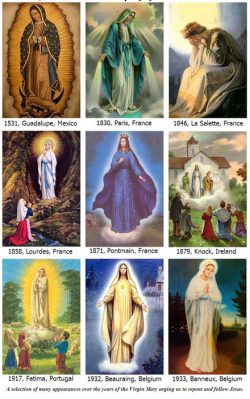This is part 2 of the Virgin Mary Trilogy, what started as a recount of a random experience about my discovery of a broken statue of the Virgin Mary Mother of Grace in my first post ‘Mary, Mother of Grace’ (linked below) – I realized there was more to explore – and to share.
The Mother of Jesus is special to many of the Christian religion. So it is no coincidence that even by today’s standards – Mary (Maria) is still a very common name… as a matter of fact, my middle name is Maria.
The Virgin Mary has so many names and titles and for a minute that could get confusing. I am not a theologian, just an ordinary layperson with a strong spiritual base… and to be clear, I am not a religious person by any standard… only someone eager learn more about this particular issue… plus I am a firm believer in the words: Seek and Ye Shall Find.
The more I delve into this the more I am fascinated by this research… a name with a title allows us to understand the greater aspect of the name bearer. Over the centuries the Virgin Mary has had many titles (also known as Marian Titles), and these titles have been given to honor her, as well as noting a specific event- such as what took place in Christian History as narrated in Sacred Scriptures; other titles came from Mary’s Life example -Our Lady of Sorrows; as well as a virtue in honor of her character such as Immaculate Heart of Mary; other titles were given to her through church doctrine and dogma; as well as titles that specify the location of apparitions of the Virgin Mary.
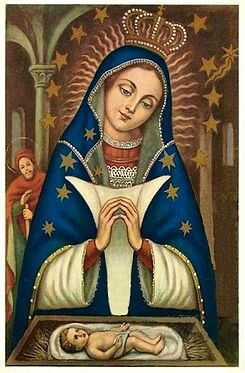 For example the story of how Lady of Altagracia has become the unofficial patron of the Dominican Republic. Which is part of my culture and I am eager to learn more about this.
For example the story of how Lady of Altagracia has become the unofficial patron of the Dominican Republic. Which is part of my culture and I am eager to learn more about this.
History of the Day of the Lady of Altagracia:
One story of the painting is that in 16th-century Salvaleón de Higüey there was a merchant who always brought his daughter a gift from his travels. One day, the daughter asked her father if he could bring her a portrait of the Virgin Mary as she had a dream about one. Her father struggled to find an image on his journey. In an inn on his way back home, an old, long-bearded man overheard the merchant talking about his problem. The old man then unfurled the image of Our Lady of Altagracia, and gave it to the merchant.
The daughter cherished her painting, but every morning, she would awake to find the picture had moved from her house and was always found outside her house, under a small orange tree. This continued until the girl told her parents, after which the place became sacred and a church was built upon on the spot to signify the grace of the Virgin Mary. (While this is a sweet and beguiling story, there is yet another one which is the most probable: it is said that the Spanish brothers Alfonso and Antonio Trejo, two of the first European settlers on Santo Domingo, brought the portrait to the island sometime prior to 1502, and eventually donated it to the parish church at Higuey.)
The painting has been on display since 1571 and was moved to the Basilica of Our Lady of Altagracia after Pope Paul VI declared the cathedral a basilica in December 1970. The people of the Dominican Republic have a deep devotion and connection with the Virgin Mary – Lady of Altagracia.
Over 20 years ago my mom gifted me a picture frame with the “Virgen de la Altagracia” – I keep in my kitchen – I know it is an awkward place … but in a weird way, it blends in my very small kitchen so much so that very seldom does anyone even notice it; and for me all that happens in my kitchen is blessed.
Now let’s go back to these titles!
These would include titles such as Mother of Good Counsel and Comforter of the Afflicted. Other titles: Our Lady of the Angels, Queen of Peace; Mother of Perpetual Help; Our Lady of Guadalupe – known as “the one who crushes the serpent” this is the image Mary left on the cloak of Juan Diego in Mexico City ; the list continues with more titles: Our Lady of Mt. Carmel; Our Lady of the Miraculous Medal; Immaculate Conception; Mother of Mercy; Blessed Mother – this title comes from Gabriel’s greeting to Mary at the Annunciation where she is called “blessed” among all other women; she is also given the title Queen of Heaven: As the mother of Jesus, Mary she is placed by his side as queen and is addressed as such.
I understand that many of us will have varying points of view… and I am not dismissing that behind everything there is a story, a beginning… and this also goes to the early “founding” days of Christianity. I am not here to discuss the atrocities that have taken place in the name of religion. As I continue to do more research an am able to reconcile and appreciate the evolution of humanity and our pursuit for knowledge and understanding of our place in the world. Having said that… I continue with my findings on the titles of Mary:
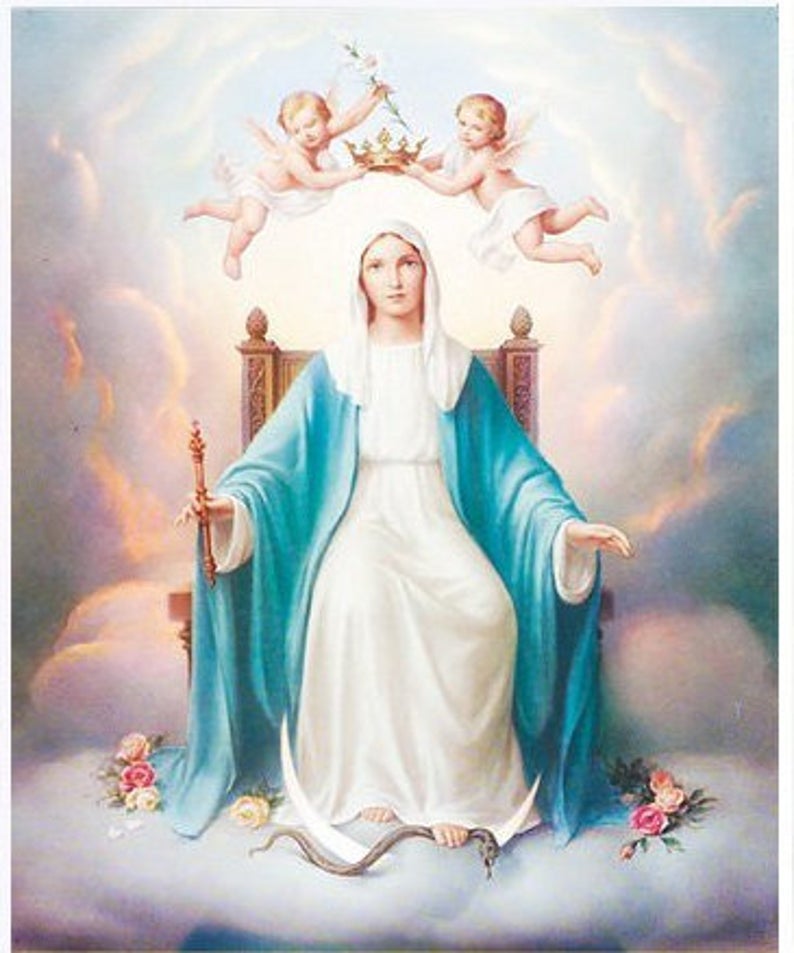 |
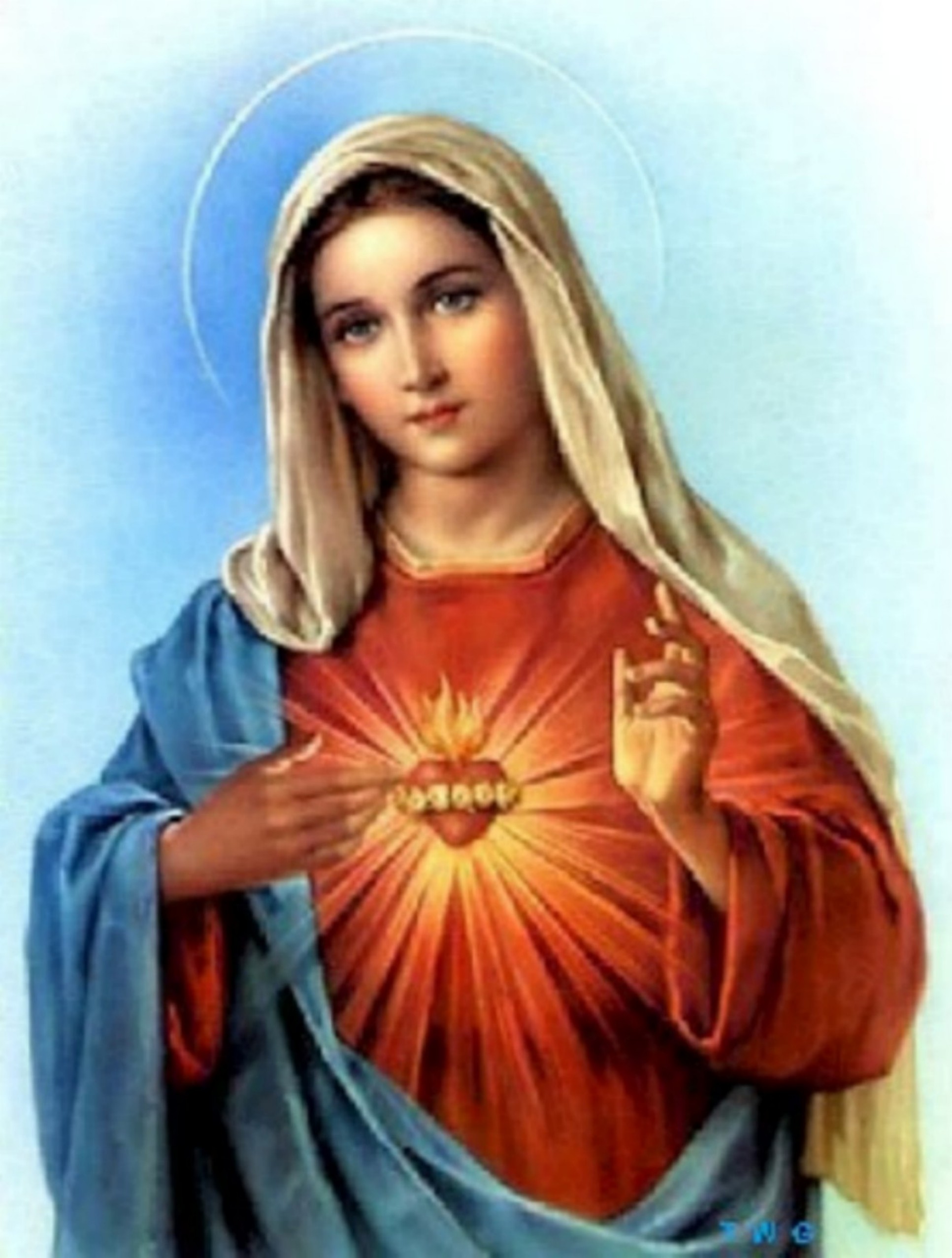 |
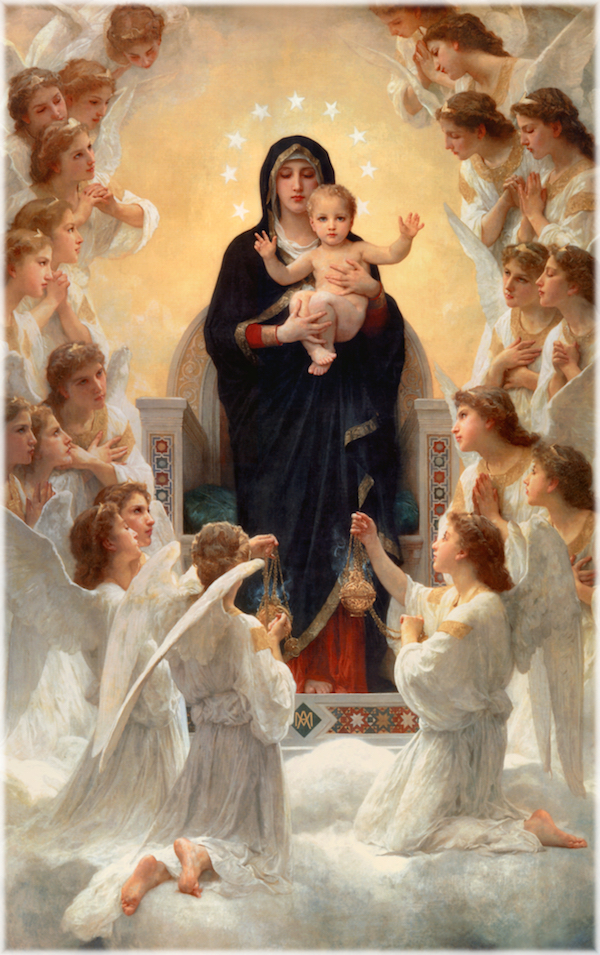 |
| Mary, Queen of Heaven | Immaculate Heart of Mary | Mary, Queen of Angels |
Yet the most honorable title of all is ‘Theotokos’: Mary’s first and most important title which means “God bearer.” The title, defined by the Council of Ephesus in 431 A.D., refers to the Virgin Mary as the Mother of the incarnate Son of God. With my feet steadfast in the ground, I gain new perspectives on the creation and founding of Christianity. The need for Constantine to grab control and power and as I read from one of the ancient Egyptian Gods… even a ruler understands his own weakness and must look to a greater force one that is ineffable in the eyes of all.
There are many things that have no explanation… so we label these events as “mysteries” or Super Natural. If science is not advanced enough to explain a “mystery”, does it mean the event did not happen? So this is the conundrum with the mysteries associated with the Mother of God. In the Catholic Faith it is embraced that God has, in Jesus Christ, accepted a human nature, chosen to be born into this world as we have all been born into this world, has lived a real, human life, and has experienced suffering and death. That God as Jesus Christ was born of a woman, while it can be appreciated and believed, can never be fully explained – and there we have a mystery. Those are precepts of the Catholics (which according to the Catholics need no explanation and should be taken on faith).
According to many Christians, no one else is or will ever be the Mother of God. No one else knows Jesus Christ as God in the way that the Blessed Virgin Mary did. There is a great psychology in this set up that the Catholics created…those men of the Christian council did put a lot of thought… and so to Catholics she is like us, but there is something uniquely different – it is her identity as Mother of God and her mission that makes her a mystery – imagine … the honor to behold (and to literally hold) God and his love for us cradled in your hands.
Whether myth or real… to seek the ideal, or an improved version of myself and to cultivate increased humility, is a worthy pass time. “Hail Mary, full of Grace”.
More musings on this trilogy:
Mary, Mother of Grace – Part 1
The Virgin Mary, the Devil and the Rosary – Part 3
reference:
Top 10 Titles of Mary
History Basilica of Our Lady of Guadalupe
book: “100 Names of Mary” by Anthony F. Chiffolo
